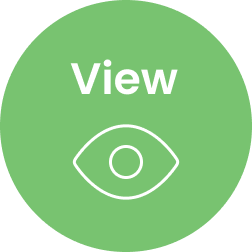
Managing business assets can be a challenge, especially as companies grow and acquire more equipment, vehicles, IT infrastructure, and property. A Business Asset Management Systems (BAMS) is designed to help businesses across Australia track, manage, and maintain these valuable resources effectively. Whether you’re a small business in Brisbane or a large enterprise with operations across the country, an efficient BAMS can save time, cut costs, and ensure compliance with Aussie regulations.
In this guide, we’ll explore what BAMS is, the different types of systems available, key features, benefits, popular software options in Australia, and tips on choosing the right solution for your business.
What is a Business Asset Management Systems (BAMS)?

A Business Asset Management System is a software solution that helps companies keep track of their physical and digital assets. From vehicles and machinery to laptops and office furniture, a BAMS provides real-time visibility of asset location, condition, usage, and value.
It allows for efficient scheduling of maintenance, records the life cycle of assets, and generates reports for audits, insurance, and tax purposes. In Australia, having an organised asset management approach is not only practical it also assists with complying with accounting standards like the Australian Accounting Standards Board (AASB) requirements.
Types of Asset Management Systems
Asset Tracking Software
Ideal for businesses that need to locate and monitor assets across multiple sites or remote locations. These systems often use barcodes, QR codes, or RFID tags to track asset movements and statuses.
Fixed Asset Management Software
Focused on long-term or high-value assets like buildings, company vehicles, tools, or large machinery. These systems calculate depreciation, support revaluations, and help businesses manage asset insurance, warranty, and audit compliance.
Enterprise Resource Planning (ERP) Systems
ERP systems include asset management as part of a broader suite, combining finance, HR, procurement, and supply chain management. Ideal for mid-to-large companies looking for an all-in-one solution.
Key Features of a BAMS
- Asset Identification: Assigns a unique ID or tag to each asset, making tracking easy.
- Real-Time Tracking: Monitor asset location and status in real-time using GPS or other technologies.
- Maintenance Scheduling: Prevent downtime by automating maintenance reminders and service logs.
- Depreciation Management: Automate depreciation calculations for tax and accounting purposes.
- Audit and Compliance: Generate reports required by the ATO and AASB with minimal manual input.
- Mobile Access: Many BAMS platforms now include apps, allowing team members to update asset data from the field.
- Cloud Storage: Ensures data is securely stored and easily accessible, especially important for remote work and disaster recovery.
Benefits of Using a BAMS in Australia
Improved Efficiency
Automates manual processes like spreadsheets and paper-based logs, saving time and reducing errors.
Cost Savings
Prevents over-purchasing, improves asset utilisation, and helps schedule preventive maintenance to avoid expensive breakdowns.
Smarter Decision-Making
Access to detailed reports helps businesses decide when to upgrade, sell, or retire assets.
Compliance and Reporting
Ensures you’re always prepared for audits, and compliant with AASB 116 (Property, Plant and Equipment) and other accounting standards.
Accountability
Keeps track of who is responsible for each asset, reducing loss and misuse.
Popular BAMS Solutions in Australia
Xero
Popular with Aussie small businesses. Offers fixed asset tracking as part of its cloud accounting software. Simple, user-friendly, and ATO-compliant.
NetSuite
An advanced ERP platform with an integrated asset management module. Great for growing businesses that need detailed financial reporting alongside asset tracking.
Accentis Enterprise
Australian-developed ERP system with strong fixed asset management features, tailored to small and medium businesses across sectors like manufacturing and logistics.
Genic Assets
Customised for Australian businesses, Genic Assets provides real-time asset tracking, maintenance alerts, and compliance tools.
AssetTiger
A budget-friendly, cloud-based option ideal for tracking assets using barcodes and generating custom reports. Free for smaller asset inventories.
Key Considerations When Choosing a BAMS
Size and Growth of Your Business
Choose a system that fits your current needs but can also grow with you.
Type of Assets Managed
Ensure the BAMS supports your asset categories—whether IT equipment, vehicles, tools, or property.
Budget
Look at not just initial setup costs, but also ongoing fees, training, and support expenses.
Integration
Check that it integrates smoothly with existing systems like MYOB, Xero, or your ERP software.
Ease of Use
Choose a platform that your team can pick up quickly. A clunky interface or complex setup can slow down adoption.
Implementing a BAMS: Best Practices
- Start with an Asset Audit: Get a complete picture of all existing assets.
- Tag Your Assets: Use barcodes or RFID to simplify tracking.
- Set Clear Policies: Define how assets are assigned, maintained, and disposed of.
- Train Your Team: Ensure everyone understands how to use the system properly.
- Monitor and Review: Regularly check asset performance and keep your database up to date.
Compliance and Regulations in Australia
Australian businesses must comply with various accounting and taxation rules, including:
- AASB 116 – Covers the recognition and valuation of property, plant, and equipment.
- ATO Requirements – Ensure proper depreciation schedules and asset valuations for tax purposes.
- Data Privacy Laws – If your BAMS stores personal or sensitive data, make sure it complies with the Privacy Act 1988 (Cth).
A modern BAMS can help automate much of the compliance process, reducing risk and saving time during audits.
Conclusion
Business Asset Management Systems are no longer a luxury—they’re a necessity for staying competitive, compliant, and cost-efficient in today’s Australian business landscape. Whether you’re managing hundreds of tools on a construction site or a handful of laptops in a small office, a BAMS can streamline operations and improve decision-making.
Ready to take control of your business assets? Start by evaluating your needs and exploring the systems that best fit your operations.
Telecoms Expense Management, Device Deployment, Mobile Fleet management, Telstra enterprise Mobility, Telstra mobility Managed Services.
Improve Business Core values, Business Consulting, Network Management, Telstra Expense Management and many more Services.


